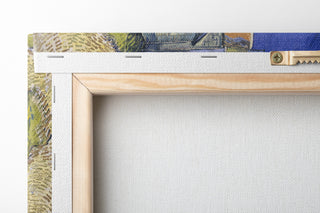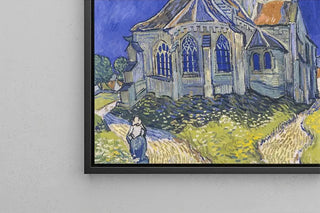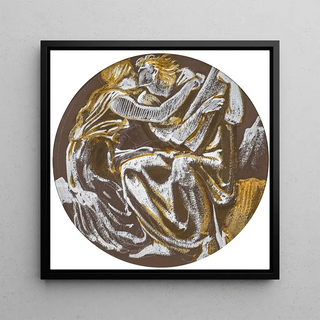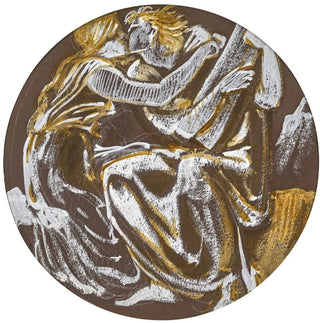Painting Orpheus and Eurydice Reunited - Sir Edward Coley Burne-Jones | Art print


View from behind

Frame (optional)
Orpheus and Eurydice reunited: the lyrical melancholy of Sir Edward Coley Burne-Jones
The composition instantly captures the eye with its balance between sinuous lines and idealized figures, where diffuse light caresses the drapes and reveals twilight hues. Faces with stylized features, almost sculptural silhouettes, and ornamental treatment of motifs testify to a soft palette and meticulous technique, blending drawing precision with pictorial sensitivity. The atmosphere breathes softness and reconciled sadness, evoking the ancient legend in a contemplative intimacy. This interpretation transports the viewer into a visual narrative that is both storytelling and symbolic.
Sir Edward Coley Burne-Jones, master of late Pre-Raphaelitism
British artist associated with the Pre-Raphaelite movement and neo-medieval aesthetics, Sir Edward Coley Burne-Jones crafted a work where myths, legends, and dreams take center stage. Influenced by William Morris and medieval sources, he favors elegant lines, architecturally composed arrangements, and iconography imbued with mysticism. His paintings and tapestries marked the transition to sophisticated decorative art, inspiring designers and collectors. Orpheus and Eurydice reunited illustrates his taste for mythological subjects and his ability to combine poetic storytelling with refined aesthetics, confirming his lasting influence on European decorative art.
A decorative acquisition with multiple assets
This art print of Orpheus and Eurydice reunited easily fits into a living room, a library, or a bedroom, bringing a cultural and poetic touch to the interior. Faithful to the original, the canvas Orpheus and Eurydice reunited offers a reproduction of colors and details that enhance textures and contrasts, ideal for creating an elegant focal point. The art print Orpheus and Eurydice reunited is suitable for both classic decor and contemporary atmospheres seeking a romantic and historic note. Choosing this piece is inviting a narrative and decorative work that enriches the space while expressing a taste for art and quality.

Matte finish

View from behind

Frame (optional)
Orpheus and Eurydice reunited: the lyrical melancholy of Sir Edward Coley Burne-Jones
The composition instantly captures the eye with its balance between sinuous lines and idealized figures, where diffuse light caresses the drapes and reveals twilight hues. Faces with stylized features, almost sculptural silhouettes, and ornamental treatment of motifs testify to a soft palette and meticulous technique, blending drawing precision with pictorial sensitivity. The atmosphere breathes softness and reconciled sadness, evoking the ancient legend in a contemplative intimacy. This interpretation transports the viewer into a visual narrative that is both storytelling and symbolic.
Sir Edward Coley Burne-Jones, master of late Pre-Raphaelitism
British artist associated with the Pre-Raphaelite movement and neo-medieval aesthetics, Sir Edward Coley Burne-Jones crafted a work where myths, legends, and dreams take center stage. Influenced by William Morris and medieval sources, he favors elegant lines, architecturally composed arrangements, and iconography imbued with mysticism. His paintings and tapestries marked the transition to sophisticated decorative art, inspiring designers and collectors. Orpheus and Eurydice reunited illustrates his taste for mythological subjects and his ability to combine poetic storytelling with refined aesthetics, confirming his lasting influence on European decorative art.
A decorative acquisition with multiple assets
This art print of Orpheus and Eurydice reunited easily fits into a living room, a library, or a bedroom, bringing a cultural and poetic touch to the interior. Faithful to the original, the canvas Orpheus and Eurydice reunited offers a reproduction of colors and details that enhance textures and contrasts, ideal for creating an elegant focal point. The art print Orpheus and Eurydice reunited is suitable for both classic decor and contemporary atmospheres seeking a romantic and historic note. Choosing this piece is inviting a narrative and decorative work that enriches the space while expressing a taste for art and quality.






